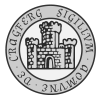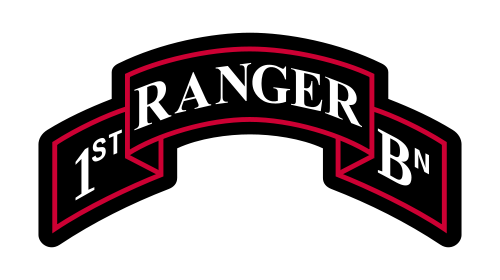Carrickfergus’ war time history is only sparsely documented, despite the large amount of activity here during World War II. One of the war time connections to Carrickfergus is that of the United States Army Rangers, specifically the 1st Ranger Battalion.
When the United States finally entered the Second World War after the Japanese attack on Pearl Harbour, it was only about a month before US troops were arriving in Belfast on the 26th of January 1942. They were distributed throughout Northern Ireland. It was forbidden for troops to cross into neutral Ireland. All in all, over 300,000 troops were posted to Northern Ireland, many of whom ended up in Ballycastle, Ballymena and of course Carrickfergus.
The US Army units posted in Carrick were based in Sunnylands Camp, just north of the railway line. The camp was fairly large and spanned from the North Road at its eastern boundary, reaching about halfway to Salthill in the west – about 4 hectares in total. The camp featured a multitude of Nissen huts which housed the troops, and a large training and exercise ground. Despite there being no official records or acknowledgement, locals alive at the time have consistently recalled encountering German POWs imprisoned in the camp during the later part of the war. These may have been seamen or submariners captured and brought into Northern Ireland via the Foyle.
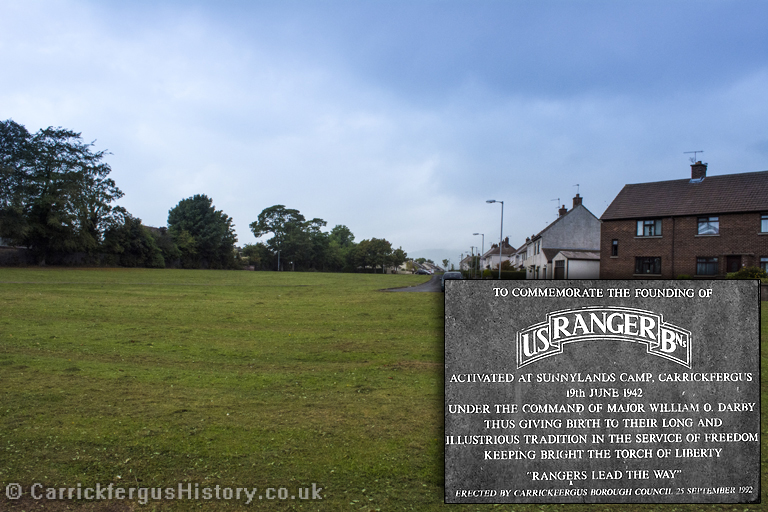
Not long after the US Army’s arrival, Major General Lucian Truscott in conjunction with the British Chief of the General Staff began to push plans for “an American unit along the lines of the British Commandos”. The British commando units activated in World War II were hugely successful, and became renowned as highly-skilled, incredibly tough, elite units. This reputation was passed down as far as the commandos’ last remaining unit, 3 Commando Brigade of the Royal Marines, which has a fearsome reputation to this day.
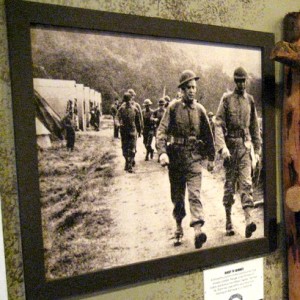
Truscott recognised these qualities, and sought to replicate them with a similar US Army unit. He passed his plans to General George Marshall, US Army Chief of Staff. The plans sparked an almost immediate interest, and a diplomatic cable was received by Truscott soon afterwards, which authorised the activation of the 1st US Army Ranger Battalion.
The US military command deliberated for some time over who would command and train the new force. Eventually, US Army Captain William Orlando Darby was chosen as officer commanding of the unit, and Company A was constituted on the 27th of May 1942. Darby had been in Northern Ireland since the US entered the war and had developed a keen interest in the British commandos. A graduate of The United States Military Academy at West Point, his experience of command, impeccable record, and a history of amphibious training made him an ideal candidate for the role. He was promoted to Major within weeks of his selection.
News of the new unit was circulated within the ranks of the US troops, not just in Carrickfergus but throughout Northern Ireland. Soon, over 1500 men had volunteered for selection. A rigorous selection process took place in Sunnylands Camp, not unlike modern-day elite selection courses such as the Potential Royal Marines Course (PRMC) of the Royal Marines Commandos or “P Company” of the Parachute Regiment.
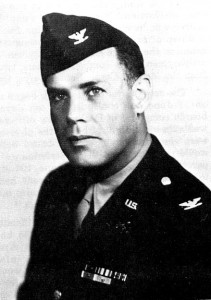
At the conclusion of this, only around 600 hand-picked soldiers remained, over eighty percent of which came from the 34th Infantry Division (the “Red Bulls”), a well-disciplined and highly-regarded unit of the time.
Having selected his men, Major Darby activated Company A, 1st Ranger Battalion on the 19th of June 1942, in an announcement at Sunnylands Camp. The unit became increasingly known as “Darby’s Rangers”.
Shortly after its activation, the battalion travelled to Achnacarry in Scotland to train with its British counterparts. There they underwent the intense British commando training regime overseen by experienced commando instructors, under the watchful eye of Lieutenant Colonel Charles Vaughan of the British Army. The training regime was brutal, and exercises were conducted using live rounds, which led to the death of one Ranger recruit and wounded many others. Only about 500 of Darby’s original men were tough enough to complete the training.
The 1st Ranger Battalion was the first US ground force to see action in the European theatre of WWII, when they joined Canadian army forces and British Commandos to conduct the ill-fated Dieppe Raid on 19th of August 1942. There, Ranger Lieutenant Edward Vincent Loustalot became the first US troop to be killed in Europe during the war after taking over command from the British Captain leading the assault, who had been killed.
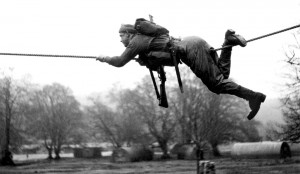
William Darby saw rapid promotion. At some point after leaving Achnacarry, he was promoted to Lieutenant Colonel and then to Colonel on 11th of December 1943 – at this point he had returned to the US and taken command of the 179th Infantry Regiment. He returned to Europe – this time to Italy – in March 1945, where he was killed on the 30th of April near Trento by a German shell-burst. Inspired by their fallen commander, “Task Force Darby” completed their mission as planned. Darby was posthumously promoted to Brigadier General on 15th of May 1945 and is now interred in Fort Smith National Cemetery, Arkansas.
The 1st Ranger Battalion, which was dissolved and re-formed several times since WWII, is active today and based at Hunter Army Airfield in Savannah, Georgia.
In 1992 a permanent memorial was erected in Sunnylands in a ceremony attended by around a dozen Rangers veterans.
Lester Bernard Cook – the last remaining member of the original Darby’s Rangers – died on 9th August 2020 in his native Des Moines, Iowa.
“Rangers Lead The Way“
